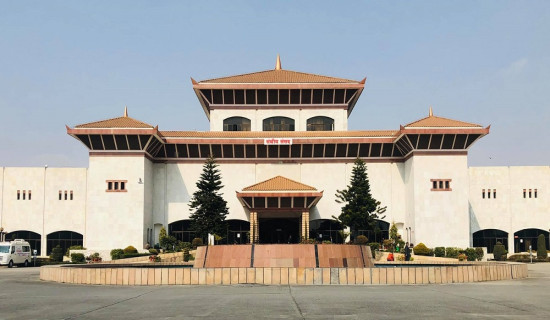- Sunday, 31 August 2025
The Untold Stories of Airline Operations
By Ipsha Aryal
When passengers board a flight, they usually think about their destination or perhaps the in-flight meals. What they don't often realise is the amount of work going on behind the scenes to make sure their journey runs smoothly and on time. From pilots preparing for unexpected emergencies to ground staff working against the clock, every second in aviation matters.
How do airlines seamlessly manage hundreds of factors like weather disruptions, mechanical hiccups and air traffic to stay on schedule? This is the story of precision, teamwork, and coordination that keeps the skies running like clockwork.
At the heart of every airline operation lies a fast-paced world of coordination, much of it handled by the ground staff whose efforts often go unnoticed. While passengers are checking in or waiting at the gate, this team is already in motion. From loading baggage and refuelling the aircraft to handling catering, last-minute paperwork, and cabin cleaning, they’re racing against the clock.
A single delay, even by a few minutes, can throw off an entire day’s schedule. “We start prepping a flight at least two hours in advance,” said a member of the operations team at a local airline. “Everything has to move in sync; every minute matters.”
Before an aircraft is fully ready, there's an entire checklist that needs to be completed, and that starts with the Aircraft Maintenance Engineers and Technicians. These are the people working behind the scenes, often hours before a flight, making sure everything is safe and up to standard. Whether it be inspecting and testing systems or fixing any technical issues, their job is to ensure the aircraft is airworthy and meets all the strict regulations.
It’s not quick or easy work. It often involves long hours, tough conditions, and a high level of focus. Aircraft maintenance is one of the most demanding parts of aviation that requires time, money, the right parts, and absolutely no room for error. Thanks to their hard work, flight crews can step into the cockpit with confidence, knowing everything is in place.
They remain in constant communication with air traffic control, ground staff, and even other airlines, ensuring that no stone is left unturned. Every update from a weather alert to a change in runway must be acted on instantly.
This is where the Operations Control Centre, often called the nerve centre of airline logistics, comes in. Here, teams track every flight in real time. They monitor weather patterns, adjust for mechanical concerns, and reroute aircraft when needed. One delay can throw off connections for hundreds of passengers and crew, so the goal is not just to respond, but to anticipate.
Solutions have to be found in minutes, not hours. Whether it’s rebooking, rerouting, or redistributing crew, the focus remains: keep operations flowing and disruptions minimal. Most passengers never notice any of this, and that’s the point.
But aviation isn’t only about reacting to problems; it’s also about preparing for them long before they happen. Behind every calm, confident pilot in the cockpit is a rigorous training journey, one that takes place not just in the skies but in full-motion flight simulators on the ground.
These high-tech machines replicate everything from turbulence to engine failure, teaching pilots how to stay calm and decisive when real-world challenges arise. Instructors simulate emergencies, bad weather, and system malfunctions so that when such issues occur in actual flight, responses are quick. And it doesn’t stop with pilots.
Cabin crews also undergo intense training for medical emergencies, evacuations, and passenger management. Everyone on board has been trained not just to perform duties, but to respond under pressure, often in life or death situations.
At its core, the aviation industry is all about being prepared. What looks like a straightforward trip from point A to B is actually the result of careful planning, quick decisions, well-rehearsed responses, and hundreds of people working in harmony. From simulator training to managing flight schedules and handling unexpected problems, it takes a lot of coordination to keep everything running smoothly.
So, the next time you're buckled in and your flight begins to taxi down the runway, take a moment to think about everything and everyone working tirelessly to get you there. You’re part of something far more complex than it seems. And thanks to the people behind the scenes, most of it will go off without a hitch.
(A Level Student, Rato Bangala School)








-square-thumb.jpg)








